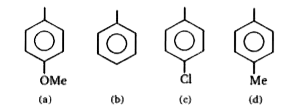Migratory fishes are
Euryhaline with aglomerular kidneys
Stenohaline with aglomerular kidneys
Stenohaline with glomerular kidneys
Euryhaline with glomerular kidneys
The correct Answer is:D
To answer the question about migratory fishes, we need to analyze the characteristics of these fishes in relation to their environment and physiological adaptations. Here’s a step-by-step solution:
Step 1: Understand the Definition of Migratory Fishes
Migratory fishes are species that travel from one habitat to another, often between freshwater and saltwater environments. This migration can be for breeding, feeding, or other life cycle events.
Hint: Think about why fish might need to move between different types of water environments.
Step 2: Identify the Types of Salinity
Fishes can be categorized based on their tolerance to salinity:
- Stenohaline: These fishes can only tolerate a narrow range of salinity.
- Euryhaline: These fishes can tolerate a wide range of salinity, including both freshwater and saltwater.
Hint: Consider the environments that migratory fishes inhabit and how they adapt to varying salinity levels.
Step 3: Determine the Kidney Type
The type of kidney present in fishes is crucial for osmoregulation:
- Glomerular Kidney: This type of kidney has glomeruli and is typically found in fishes that live in freshwater.
- Aglomerular Kidney: This type lacks glomeruli and is found in some marine species that have adapted to conserve water.
Hint: Reflect on the physiological adaptations that allow migratory fishes to survive in different salinities.
Step 4: Analyze the Options Given
The options provided are:
1. Urehaline and agglomerular kidney
2. Stenohaline and agglomerular kidney
3. Stenohaline, glomerular, and euryhaline
4. Urehaline, glomerular, and agglomerular
Since migratory fishes can adapt to both freshwater and saltwater, they are typically euryhaline. However, the question seems to focus on the correct pairing of terms.
Hint: Look closely at the definitions of urehaline and euryhaline and how they relate to the kidney types.
Step 5: Conclusion
Based on the analysis:
- Migratory fishes are euryhaline because they can live in both freshwater and saltwater.
- They typically have a glomerular kidney to help them manage the varying salinity levels.
Thus, the correct answer is that migratory fishes are euryhaline and possess a glomerular kidney.
Final Answer: Migratory fishes are euryhaline and have a glomerular kidney.
Migratory fishes are species that travel from one habitat to another, often between freshwater and saltwater environments. This migration can be for breeding, feeding, or other life cycle events.
Fishes can be categorized based on their tolerance to salinity:
- Stenohaline: These fishes can only tolerate a narrow range of salinity.
- Euryhaline: These fishes can tolerate a wide range of salinity, including both freshwater and saltwater.
The type of kidney present in fishes is crucial for osmoregulation:
- Glomerular Kidney: This type of kidney has glomeruli and is typically found in fishes that live in freshwater.
- Aglomerular Kidney: This type lacks glomeruli and is found in some marine species that have adapted to conserve water.
The options provided are:
1. Urehaline and agglomerular kidney
2. Stenohaline and agglomerular kidney
3. Stenohaline, glomerular, and euryhaline
4. Urehaline, glomerular, and agglomerular
Based on the analysis:
- Migratory fishes are euryhaline because they can live in both freshwater and saltwater.
- They typically have a glomerular kidney to help them manage the varying salinity levels.
Topper's Solved these Questions
- BOOK - AAKASH SERIESCHAPTER - ORGANISMS AND POPULATIONSEXERCISE - EXERCISE-II (POPULATION INTERACTIONS)1videos
ORGANISMS AND POPULATIONS
- BOOK - AAKASH SERIESCHAPTER - ORGANISMS AND POPULATIONSEXERCISE - EXERCISE-III (PREVIOUS AIPMT/NEET QUESTIONS)35videos
ORGANISMS AND POPULATIONS
- BOOK - AAKASH SERIESCHAPTER - ORGANISMS AND POPULATIONSEXERCISE - EXERCISE-II (WATER-RELATED ADAPTIONS)2videos
ORGANISMS AND POPULATIONS
- BOOK - AAKASH SERIESCHAPTER - NEURAL CONTROL AND COORDINATIONEXERCISE - EXERCISE-III( PREVIOUS AIPMT / NEET QUESTIONS)33videos
NEURAL CONTROL AND COORDINATION
- BOOK - AAKASH SERIESCHAPTER - PHOTOSYNTHESIS IN HIGHER PLANTS EXERCISE - Exercise - III27videos
PHOTOSYNTHESIS IN HIGHER PLANTS
Similar Questions
Knowledge Check
- Question 1 - Select One
Migratory aptitude of the following in decreasing order is :
 Aa>c>b>dBa>d>b>sCa>d>c>bDb>c>a>b
Aa>c>b>dBa>d>b>sCa>d>c>bDb>c>a>b

